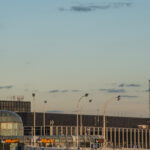A.M. Best Co. has affirmed the issuer credit rating (ICR) of “bbb-” of New Zealand’s Tower Limited, as well as the financial strength rating of “A-” (Excellent) and the ICR of “a-” of Tower Insurance Limited, a wholly owned subsidiary of Tower Limited. The outlook for all the ratings is stable.
“The ICR of Tower Limited, the parent of Tower Insurance, reflects the group’s simpler corporate structure and lower financial leverage after the separation of Australian businesses from New Zealand operations in November 2006,” Best explained. “The rating also considers the group’s smaller earning base and operational scale after the de-merger.
“With the recapitalization resulting from its restructuring, Tower Limited experienced an improvement in its debt-to-capital ratio. The Group’s interest coverage ratio stood at a level that is commensurate with its existing rating, although its earning base and operational scale are significantly reduced. The spin-off of the Australian businesses led to a reduction in the group’s net after-tax profit of more than 50 percent.
“Due to the group’s current capital structure, the profitability of its key operating subsidiaries, including Tower Insurance, will be essential to the stability of Tower Limited’s rating going forward.
“The ratings of Tower Insurance recognize its consistently profitable underwriting results, improvement in capitalization, well-established market presence and continued diversified distribution network,” Best continued.
The rating agency also noted that it considers Tower Insurance a core subsidiary of Tower Limited, which offers “diversified products to markets in New Zealand and the Pacific Islands through its multiple distribution channel network. The company has established a strong market presence in personal lines in New Zealand and in commercial lines of business in the Pacific Islands.
“The company’s operating performance has been consistently profitable over the past five years. Its average combined ratio over the same period stood at 97 percent, and the loss ratio was maintained at 65 percent. As of September 2006, approximately 80 percent of total invested assets were comprised of cash, call deposits and fixed income securities. Equity investments accounted for the balance.
“Tower Insurance’s risk-adjusted capitalization, as measured by Best’s Capital Adequacy Ratio, has improved. The company’s net premium leverage declined, primarily attributable to high retention of operating earnings.”
As offsetting factors Best cited “Tower Insurance’s exposure to catastrophe losses and concentration risk associated with its key alliance partner.” Best noted that, “although Tower Insurance maintains a strong strategic alliance partnership with banks and other financial institutions, its exposure to a single alliance partner (accounting for approximately one third of the company’s business) could adversely impact its distribution capabilities if this key partner discontinues its partnership with Tower Insurance.
“Tower Insurance is exposed to weather-related catastrophic events as experienced in recent years. In June 2006, the net claims for the snowstorms in South Canterbury were about NZD 3.9 million (approximately $2.3 million). In addition, the company’s earnings were somewhat exposed to political and social instability in the Pacific regions, as observed in the Solomon Islands and Tonga in 2006. Despite these challenges, Tower Insurance is reasonably protected by its reinsurance arrangements.”
Topics Profit Loss
Was this article valuable?
Here are more articles you may enjoy.


 Reserve Strengthening for Casualty Lines Not Over: Moody’s
Reserve Strengthening for Casualty Lines Not Over: Moody’s  Progressive Set to ‘Maximize’ Growth, Building on Q1
Progressive Set to ‘Maximize’ Growth, Building on Q1  Cracks in O’Hare Columns Aren’t Insured Property Damage, Just Bad Product – Court
Cracks in O’Hare Columns Aren’t Insured Property Damage, Just Bad Product – Court  Berkshire’s ‘Most Important’ Biz Drives Q1 Results; GEICO Still Behind on Tech
Berkshire’s ‘Most Important’ Biz Drives Q1 Results; GEICO Still Behind on Tech 

